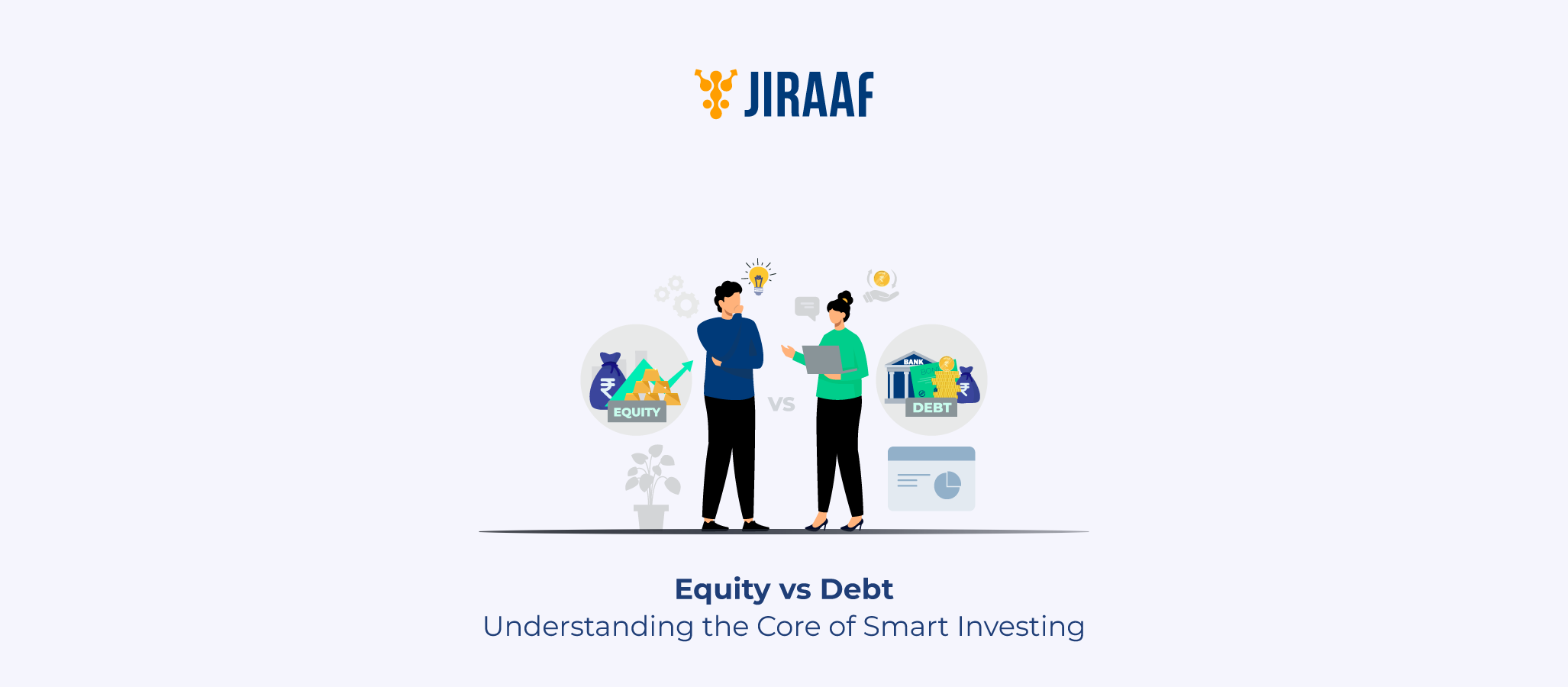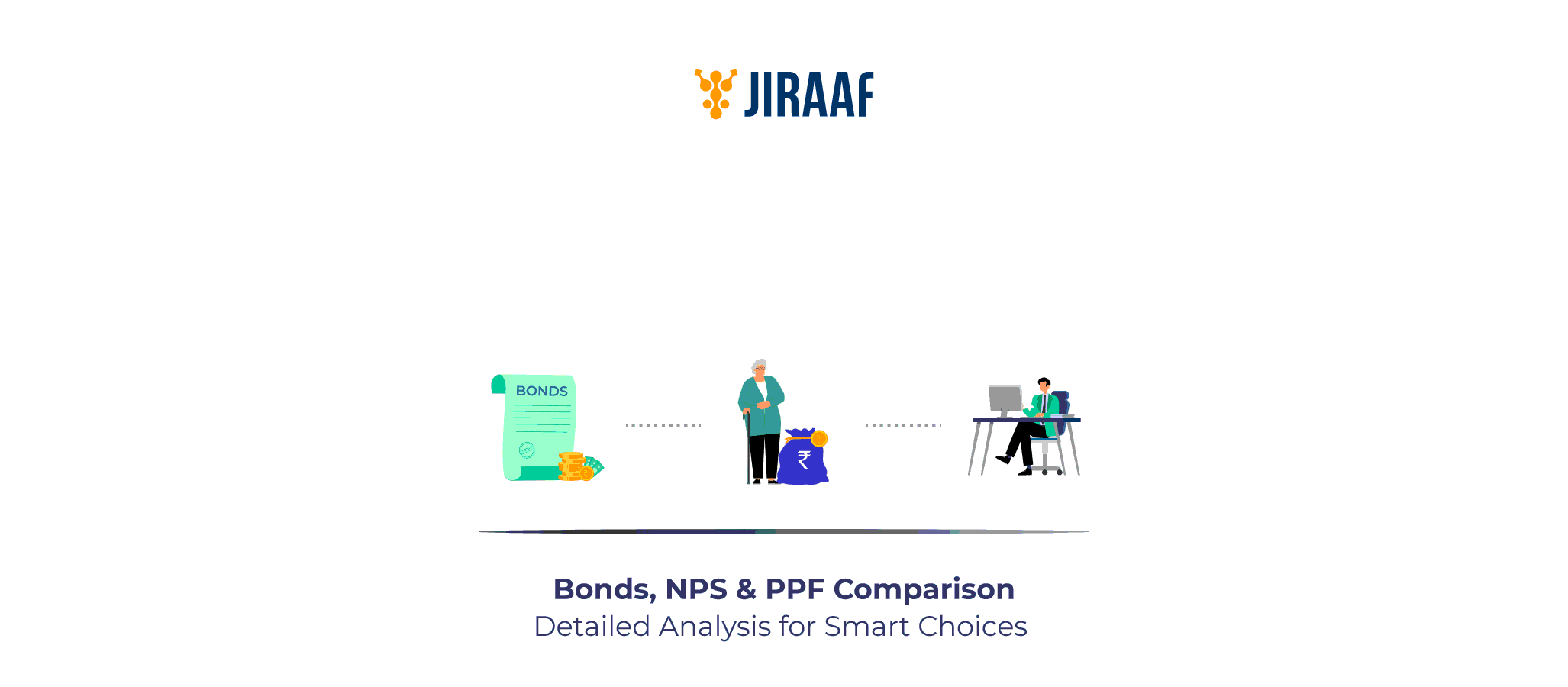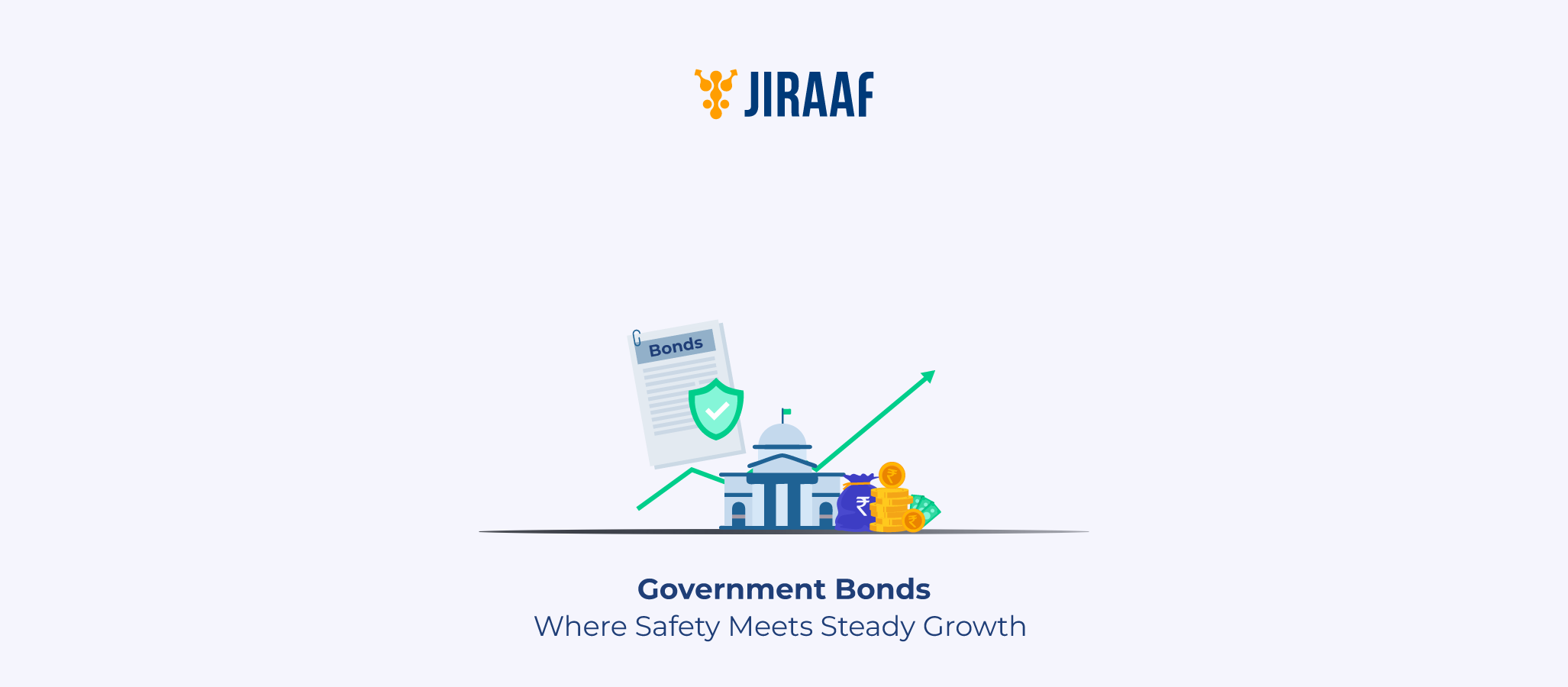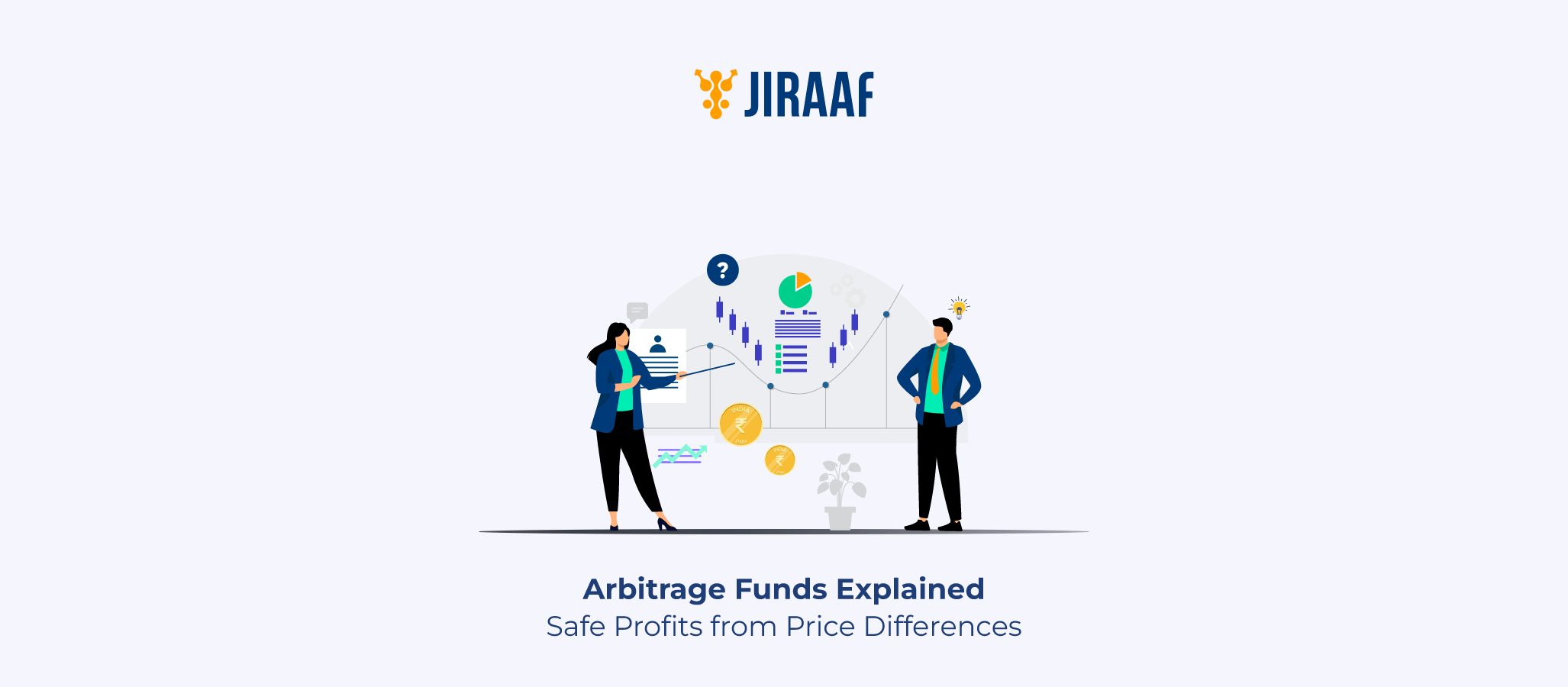If you’ve ever wondered why some people swear by the stock market while others stick to debt options, you’re not alone. Most salaried investors know about equity and debt, but aren’t quite sure how they truly differ or which one suits their goals better.
Equity can multiply your wealth, but it comes with higher risks. Debt, on the other hand, generally focuses on stability and predictable returns more than growth. Knowing how both work is the key to striking the right balance between growth and security.
In this blog, we’ll break down the key differences between equity and debt investments and help clear up the confusion around which one might work best for you.
What is Equity Investment?
Equity investment simply means buying a part of a company and becoming one of its owners. When you purchase shares, you’re not just putting your money into an instrument—you’re putting it into a business.
If the company performs well, its profits grow, and that often translates into dividends (a portion of the company’s profit distributed to shareholders) and capital appreciation (an increase in share price) for investors like you.
For instance, if the company’s value in the market rises, the demand for its shares increases, and so does its price, giving you higher returns.
But just as profits rise when things go right, they can fall when things go wrong. If the company underperforms or the market faces a downturn, the value of your investment can drop sharply. That’s why equities carry a higher level of risk—they don’t guarantee returns.
Still, over the long term, equity has historically outperformed most other asset classes. For example, the Nifty 50 Index, which represents India’s top 50 companies, has delivered an average annual return of around 18.61% over the last five years (as of October 2025).
However, not every investor wants to deal with such uncertainty. That’s where debt investments step in—offering predictability and stability over rapid growth.
What is Debt Investment?
Debt investment is the opposite of owning a company—it’s about lending to it. When you invest in debt, you’re essentially giving money to a company, municipality, or government, and in return, you earn interest over time.
It’s an umbrella category that includes several instruments, like:
- Corporate Bonds: Issued by companies to raise funds, these typically offer returns between 8–15%, depending on the issuer’s credit strength.
- Municipal Bonds: These are issued by state or local authorities for infrastructure projects. The Nifty Municipal Bond Index has shown average returns of 8.36% in the past three years.
- Government Bonds (G-secs): Issued by the central or state government; considered one of the safest debt instruments, offering yields of around 6.16% over five years.
- Treasury Bills (T-bills): Short-term government securities with maturities of up to one year. They are low-risk and ideal for parking surplus funds.
- Debentures and Non-convertible Debentures (NCDs): Fixed-return instruments offered by corporations to raise long-term capital.
Among these instruments, corporate bonds and debentures might sound similar. You can check corporate bond vs debenture blog to find answers to your questions.
Debt investments don’t make you an owner—they make you a lender. In return, you receive fixed interest and your principal amount back upon maturity.
Now that we’ve seen how both equity and debt work, it’s natural to wonder—how do they actually differ? Let’s compare them across key parameters.
Key Differences Between Equity and Debt Investment
While both help grow your money, they do so in completely different ways.
Here’s how they compare:
| Basis of Difference | Equity Investment | Debt Investment |
| Ownership | You become a partial owner of the company | You are a lender to the company or government |
| Voting Rights | Shareholders may have voting rights in company decisions | No voting rights; you only receive interest and principal |
| Return Type | Variable–depends on company performance and market conditions | Fixed/Semi-fixed as determined by interest rate agreed upon |
| Risk Level | High–subject to market volatility | Low to moderate–depends on the issuer’s creditworthiness |
| Income | Possible dividends and capital appreciation | Regular interest income |
| Maturity | No fixed maturity; can be sold anytime in the market | Has a fixed tenure and maturity date. |
| Taxation | Gains taxed as capital gains depending on the holding period | Interest income taxed as per income slab |
| Priority in Liquidation | Equity holders are the last to be paid. | Debt holders are paid first if the company winds up |
| Liquidity | High, but prices may fluctuate | Moderate to low, depending on lock-in and secondary market |
| Return Potential | High in long term | Stable but limited |
Knowing the difference is only half the story. To make smart investment choices, you also need to weigh the pros and cons of each.
Pros and Cons of Equity and Debt Investments
Before choosing between equity and debt, it’s crucial to know what each brings to the table.
Equity Investments: Pros and Cons
| Pros | Cons |
| Potential for high long-term returns | High volatility; value can change daily |
| Benefit from compounding and business growth | No guaranteed returns |
| Acts as a hedge against inflation over time | Requires regular monitoring and research |
| Easy to buy and sell in the stock market | Emotional bias can lead to poor investment decisions |
Debt Investments: Pros and Cons
| Pros | Cons |
| Fixed, predictable returns and steady income | Lower return potential than equity |
| Lower risk compared to equities | Interest income is generally taxable (except tax-free bonds) |
| Useful for capital preservation | Inflation may erode the real value of returns |
| Prioritized repayment if the company shuts down | Limited liquidity for some instruments |
Once you understand their strengths and weaknesses, the next step is finding which one fits your situation best.
Which is Better: Equity or Debt Investment?
There’s no single answer—it depends entirely on your goals, risk tolerance, and life stage.
Here’s a quick way to think about it:
- Risk Appetite: If you can tolerate short-term volatility for long-term gains, equity suits you better. If you prefer stability and steady returns, debt is ideal.
- Returns: Higher risk usually means higher returns. Equity can outperform debt over time, but debt provides security.
- Liquidity: Equities are easier to sell but fluctuate in price. Debt instruments may have lock-in periods but offer stable redemption.
- Age & Goals: Younger investors can afford more equity exposure since they have time to recover from market dips. As retirement nears, debt should gradually form a larger portion for income stability.
- Taxation: Interest from debt is taxed as per your income slab, while equity gains may be taxed at a lower capital gains rate after a certain period.
- Company Performance: If a company shuts down, equity holders are last in line to receive payment—debt holders get priority, though they earn limited profit when the company performs well.
Choosing Between Debt and Equity Based on Your Goals
A smart investor doesn’t pick sides between equity and debt—they balance them. Debt provides a foundation of stability, protecting your capital and ensuring regular income. Equity builds on that base, adding growth and long-term wealth creation.
For a salaried investor, this mix ensures that market movements don’t shake your entire portfolio. As your income and goals evolve, you can adjust the proportion—perhaps starting with more debt for short-term growth and gradually increasing equity exposure for long-term wealth creation.
And if you’re unsure about the right balance or specific investment products, consider consulting a financial advisor who can help align your portfolio with your income, risk appetite, and long-term goals.









